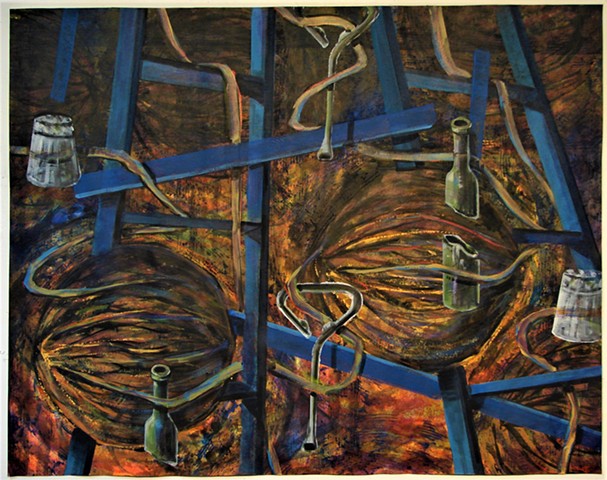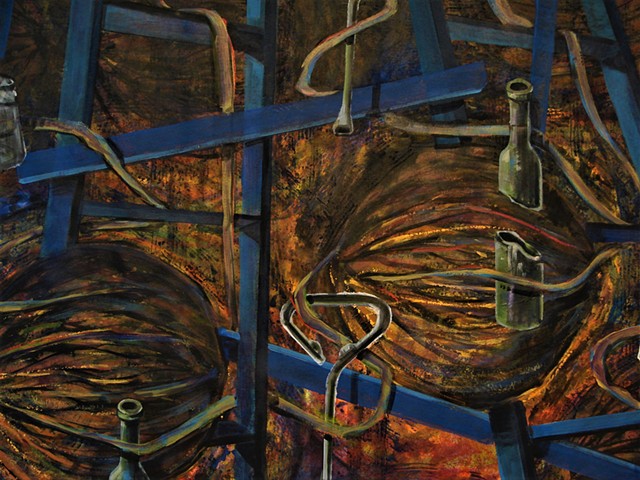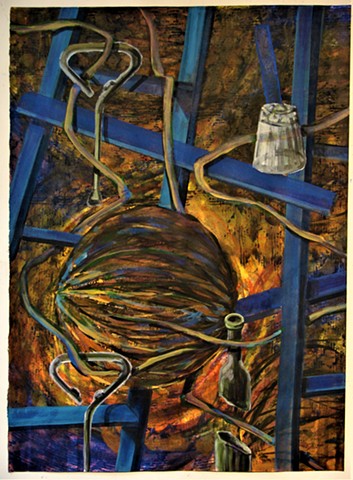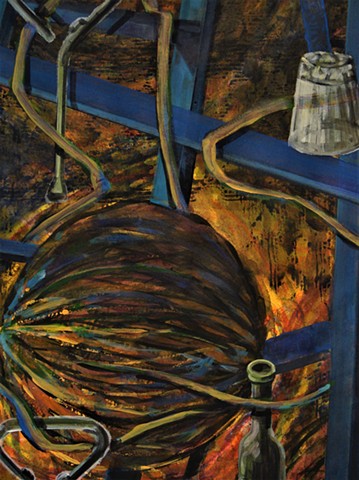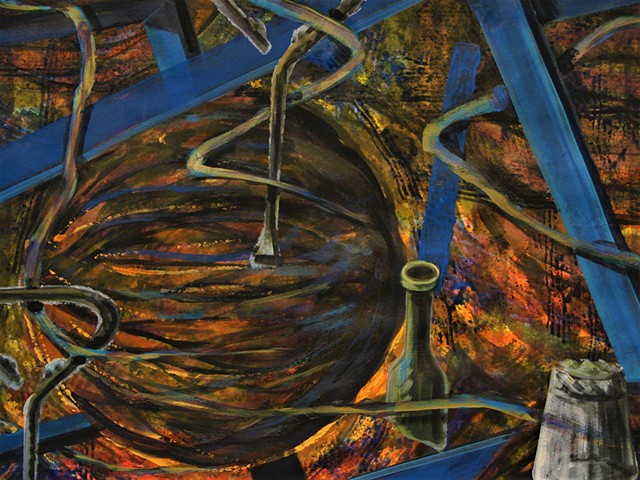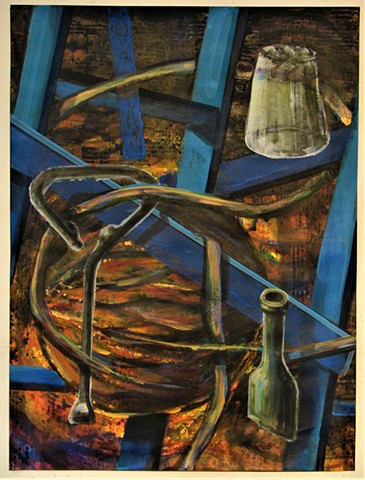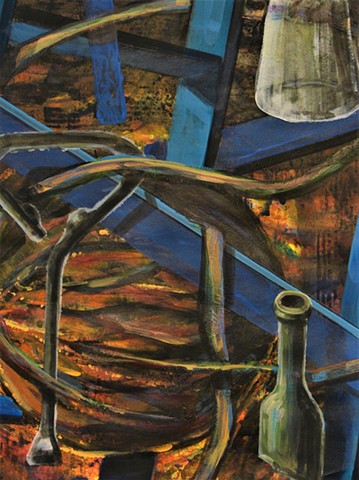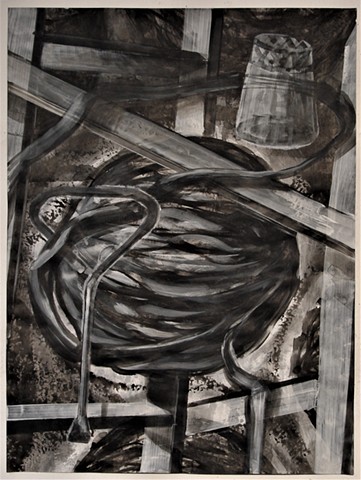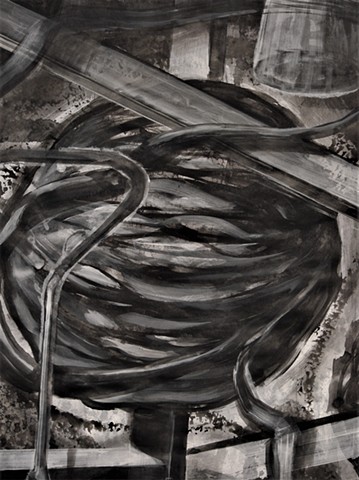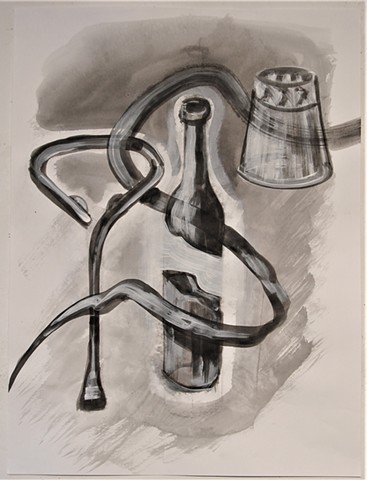Wizeners' Words
Cleaning the Brushes
There are many exceptions to be sure but, it has always seemed more than coincidental to me the number of people in the painting profession who– be it house-painter, movie set painter, scenic artist, or so-called easel painters – drank with abandon. Abandon might not be the precise word, but it does describe the results of over-imbibing, the loss of sense, reality, family, you-name-it, a pathos that can take on the tragic as well in its struggle.
Is there something in the chemical make-up of the materials of painting that stimulates the desire to drink – paint solvent replaced by liver-dissolving alcoholic drink? Or is it the repetition of brushstroke after brushstroke, no matter how purposive or tenderly laid on a surface, that has the same eventual mind-deadening effect as downing a bottle of spirits. Is part of the spirit of painting, elbows on the bar, toasting another day of work done, the spirits poured shot by shot and tipped down dry throats?
Every form of painting has in its repetitive methods, and within the sometimes-vast scope of a projecting wall, a kind of withdrawal of the mind into a meditative lapse of thought begins – daydreaming while dipping the brush and smearing it across a surface. This same lapse of thought is hidden in the spirit filled bottles that line the mirrored shelves of taverns and dark barrooms. Here, after the workday, color is muted, sound is muffled, conversations are minimal, sprung from someplace of quiet thought and disconnected dialogue. And yet, the purpose of paint is to bring fresh, clean, often colorful refurbishment, as well as the novel and revealing ideas expressed on canvas and paper.
How is it that these two disparate worlds are often part of the same day of the painter? Is a purgatorial fate part of those who decide to paint, or does a disposition develop from the kind of labor and materials involved in the trade or practice of the painter? Somewhere there is always someone – from the decoration of Neolithic cave walls until today – painting and pondering the empty surface that is slowly being coated with color. It is often said to be a gift and often it is, the gift extended to other lives that redresses the human environment. What is its real price or how can we generously accept its real purpose in our modern dollar-driven world?
